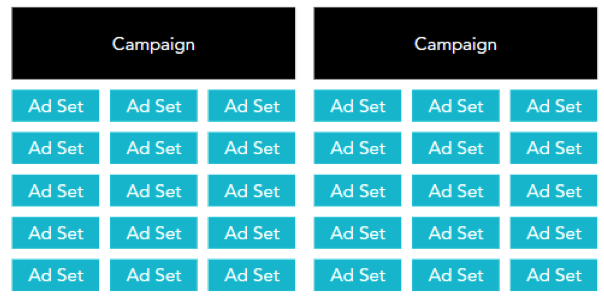Although we’ve barely finished the leftover barbecue from Labor Day weekend, every seasoned marketer knows what’s right around the corner: the inevitable start of the 2019 holiday season. With the start of that comes meetings and conversations where we chew over the most impactful strategies for our clients—how can we ensure a winning strategy to deliver the best results in this high-demand time?
1. Upon Immediate Removal of Halloween Costumes, Customers are on the Hunt for Holiday Deals
In Facebook’s 2019 Holiday Marketing Guide, it’s reported that in 2018 about 45% of shoppers “started shopping for the holidays in November or earlier.” For advertisers, this means you need a strategy that makes sense for your customers, and have it in place and ready to activate as soon as they’re ready to start their holiday shopping.
But how to develop this amazing strategy? Well, there are myriad tools in place, from your own first-party customer data (take a look at when your sales volume started to pick up in past holiday seasons and plan your budget allocation accordingly), to Facebook’s newly launched Data Insights tool, which, according to Facebook:
“…has nearly 30 searchable insights from the 2017 and 2018 holiday seasons across 25 markets, and is available in 17 languages. Explore this robust resource to ensure your 2019 holiday season is filled with insights and magic. Leveraging your data and available tools to view your customer trends can be incredibly impactful, and can greatly enhance (and ease) your ability to strategically plan your holiday campaigns.”
2. Embracing Automation = More Time for Turkey & Better ROI
2019’s optimization-acronym game has been strong. With Facebook alone, we now have CBO (campaign budget optimization) and DCO (dynamic creative optimization), in addition to non-acronymized optimization options like placement optimization and dynamic ads for broad audiences. These optimizations are apart of Facebook’s “Power 5,” a set of optimization features that the platform recommends advertisers implement to scale growth.
Specifically, Facebook says:
“The days of manually hacking your way to ad success are no more. Top direct-response advertisers are now leveraging a specific set of automated ad tactics to unlock new phases for growth. We call these tactics the ‘Power 5’ and when used together, they have the ability to transform ad performance and scale across the Facebook Family of Apps.”
“Transform ad performance” may sound like an exaggeration, but at 3Q we’ve found that adoption of the Power 5 does indeed deliver some pretty stellar results. While testing into CBO and placement optimization for a client during the 2018 holiday season, we were ultimately able to perform with a 5x increase in sales, a 2x increase in conversion rate, and a 2x decrease in cost per acquisition.
And those results have proven to not be an anomaly—we’re continuing to see great results with clients who adopt it across the agency, which means more time spent carving and eating turkey, and less time optimizing campaigns on Thanksgiving Day.
While we’re on the subject of the Power 5….
Recommended for You
3. The Most Nimble and Responsive Advertisers are Using a Simplified Account Structure
I know I’m cheating a bit here by referencing the Power 5 twice, but this one is truly worthy of its own section. We’ve all worked in social ad accounts that were created back when we had to have multiple lookalike audiences, re-engagement audiences, plus a few versions of a customer list live all at the same time to see great performance, but those days are long past!
The best-performing accounts now are those with a more streamlined structure. This means instead of maintaining an account that looks like this:

You’d shift your structure to more resemble this:

Outside of the gains you’d get in management efficiency, a more simplified structure makes sense because we’re finding that the broader your audience, the better your performance. Again, I’m aware that this is incredibly different from the campaign structures we saw some years past, but with the improvement in Facebook’s algorithm it’s no longer necessary to rely on lookalikes to find pockets of performance efficiency.
The shift to a more simplified structure actually extends past just social media—in most cases, simplification delivers better results in Google as well. The key thing to remember is this: in the case of any platform with strong algorithmic bidding, the signals used to optimize your campaigns are at the campaign level.
A more consolidated campaign structure equals more data density for your campaigns, which equals more data points for the algorithm to use, which will ultimately deliver an incredibly optimized campaign.
Implementing the above tips may seem daunting, but we’ve found that they truly deliver fantastic performance results. As long as you start early and have an account structure in place to maximize results, you’ll be ready to cruise right through the holiday season!
